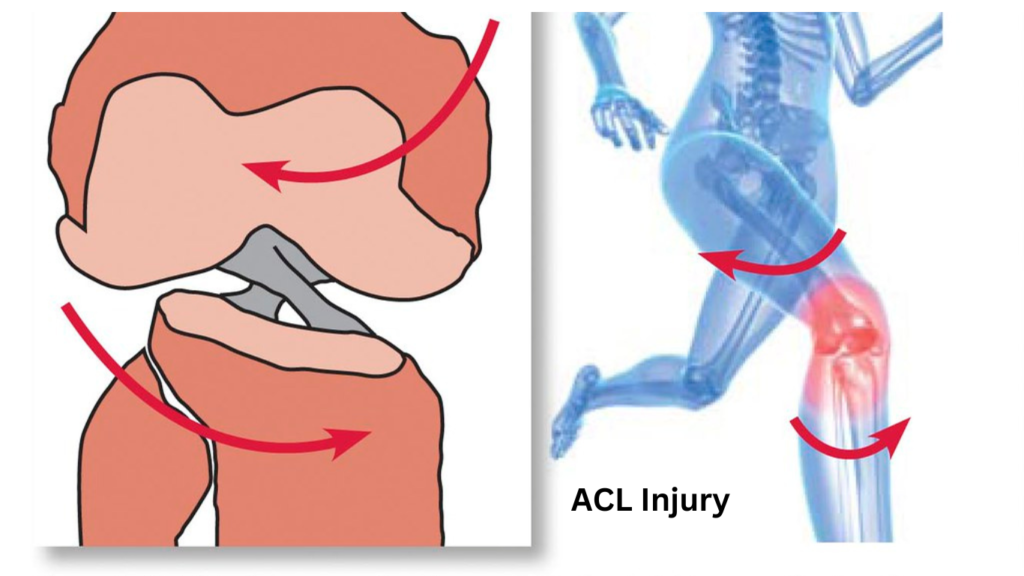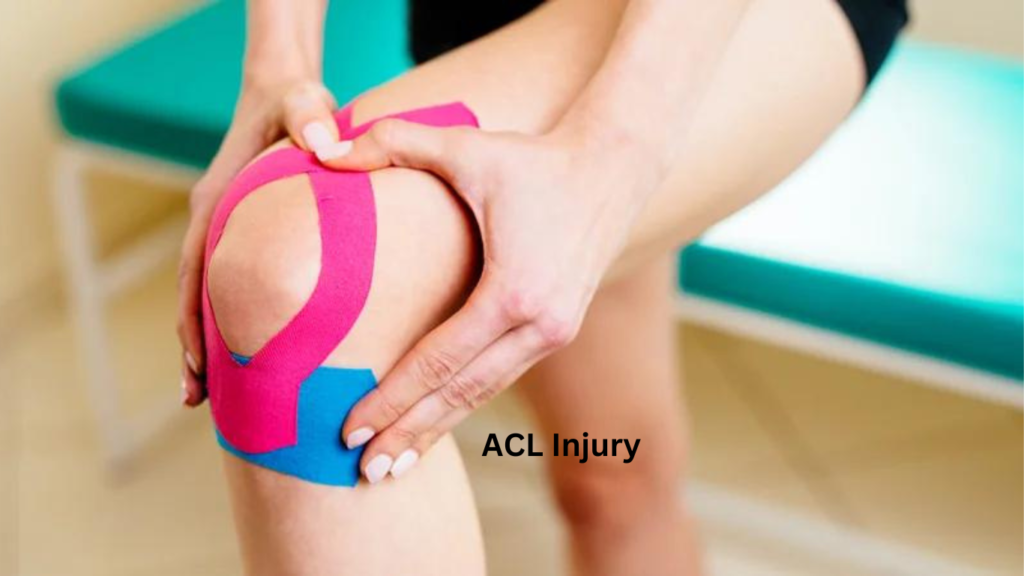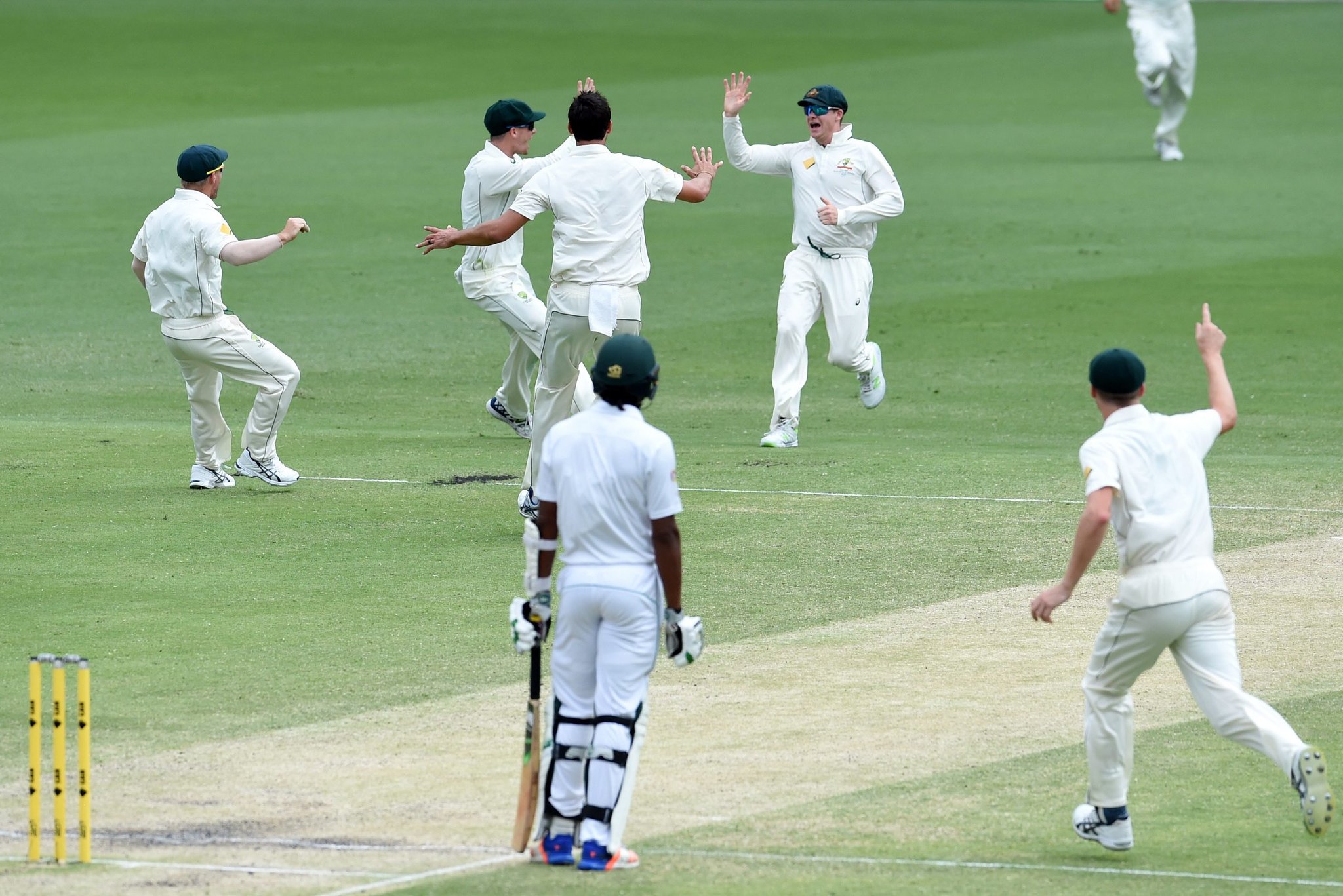Which Sport Reigns Supreme in ACL Tear Frequency?
Football and basketball have the most ACL tears. Sports injuries are a common occurrence amongst athletes, with some sports more likely to result in injury than others.
In particular, injuries to the anterior cruciate ligament (ACL) can be devastating, with rehabilitation often required for an extended period to fully recover. ACL injuries are prevalent in sports such as soccer, basketball, and football. While these sports are popular and enjoyed by many, they unfortunately also carry significant injury risks.
While acl tears can happen in any sport, these sports stand out as having the highest occurrences. Understanding the risks and being mindful of proper conditioning and technique can help reduce the risk of injury.

The Top Sports For Acl Tears
Which Sport Reigns Supreme In Acl Tear Frequency?
Anterior cruciate ligament (ACL) tears are a common injury that occurs in many sports. Some sports are more prone to causing acl tears than others. In this section, we will delve into the top sports that cause ACL tears.
Football
Football is the sport that is most frequently associated with knee injuries. According to research, football athletes experience a high incidence of ACL tears. Here are some key points:
- Acl tears are more common in football players during non-contact circumstances.
- Female athletes are more likely to tear their ACL than male athletes due to anatomical and hormonal differences.
- Certain positions in football, such as defensive backs, are more susceptible to acl tears.
Basketball
Basketball is another sport that has a high risk of ACL tears. Here are a few key points to keep in mind:
- Similar to football, non-contact situations play a significant role in
ACL injuries in basketball. - Female athletes have a higher incidence of ACL tears due to anatomical and hormonal differences.
- Jumping and landing, lateral movement, and pivoting cause ACL tears in basketball players.
Soccer
Soccer is a fast-paced, high-contact sport that places a tremendous amount of pressure on players’ knees and ankles, which can lead to ACL tears. Here are a few key points to keep in mind:
- Contact injuries are more common in soccer than in other sports.
- Female athletes are at a higher risk than male athletes due to anatomical differences.
- Poor field conditions, such as uneven or slippery surfaces, can increase the chances of ACL tears.
Skiing/Snowboarding
Skiing and snowboarding are winter sports that require a lot of leg control and balance, which puts enormous stress on the knees and can lead to acl tears. Here are some key points:
- In skiing and snowboarding, acl tears typically occur when making sharp turns or jumps.
- A forward fall can increase the risk of acl injuries in skiing or snowboarding.
- Proper equipment and technique can decrease the risk of acl injuries in skiing and snowboarding.
Gymnastics
Gymnastics is a sport that requires a great deal of agility, balance, and coordination, which increases the likelihood of acl injuries. Here are a few key points to keep in mind:
- Acl tears in gymnastics can occur during landings after big jumps or dismounts.
- Female athletes are more likely to suffer acl tears.
- Proper training, conditioning, and strict adherence to guidelines can reduce the risk of acl injuries in gymnastics.
Acl tears are a common injury in sports and can have a significant impact on athletes’ careers. Knowing which sports have the highest incidence of acl tears can help athletes, coaches, and parents take preventative measures to avoid these injuries.
Factors Contributing To Acl Tear Risk
Which Sport Reigns Supreme In Acl Tear Frequency?
Sports injuries can be both physically and mentally devastating, and one of the most common injuries that athletes face is an anterior cruciate ligament (acl) tear. Acl tear frequency varies among different sports, and understanding the factors that contribute to this risk can help athletes, coaches, and medical professionals make informed decisions about injury prevention.
In this blog post, we will discuss the main factors that contribute to the risk of acl tears, and take a look at which sports have the highest incidence rate of this injury.
Gender
Unfortunately, females are more prone to acl tears than males. This is due to anatomical and hormonal differences, such as the shape of the pelvis and the levels of estrogen and relaxin hormones in the body, which can lead to greater laxity in the ligaments.
In sports that involve jumping, pivoting, and sudden direction changes, female athletes are at a higher risk of acl tears than males.
- Female athletes have a 4-6 times greater risk of acl tears than males.
- Hormonal and anatomical differences contribute to this risk.
- Jumping and pivoting sports can increase the risk in females.
Anatomy And Biomechanics
The anatomy of an individual can also play a role in the likelihood of acl tears. For example, being knock-kneed or bow-legged can increase the risk of acl tears, as can having a smaller than average acl or a more vertical orientation of the tibia relative to the femur.
Biomechanics also plays a crucial role in acl injury prevention, as factors such as strength imbalances and poor landing techniques can place excessive stress on the ligament and increase the risk of injury.
- Unique anatomy can increase the risk of acl tears.
- Poor biomechanics can contribute to increased risk.
- Strength imbalances and poor landing techniques should be addressed to reduce the risk of acl injury.
Training Techniques
Training techniques can have a significant impact on the incidence rate of acl tears. For example, incorporating specific neuromuscular training programs, such as balance and coordination training, plyometrics, and strength training can improve proprioception and reduce the risk of acl injuries.
Additionally, the use of proper equipment such as well-fitted shoes and acl braces can also help prevent injury.
- Neuromuscular training programs can reduce the risk of acl injury.
- The use of proper equipment such as shoes and braces can also be effective in reducing the risk.
- Coaches and athletes should prioritize training techniques that address injury prevention.
The incidence rate of ACL tears varies among different sports, with sports that involve jumping, pivoting, and sudden direction changes carrying a higher risk. While certain factors, such as gender and unique anatomy, increase the likelihood of acl tears, it is crucial to prioritize injury prevention strategies such as neuromuscular training, equipment use, and proper biomechanics to reduce the incidence of this common sports injury.
Diagnosis, Treatment, And Recovery

The anterior cruciate ligament (acl) tear is a common sports injury and can happen to anyone at any level. Many sports involve quick-cutting and twisting motions, which put athletes at a higher risk of acl tears. But which sport reigns supreme in acl tear frequency?
In this post, we will examine that question and provide some insights on diagnosis, treatment, and recovery for acl tears.
Diagnosing An Acl Tear
Diagnosing an acl tear is a two-fold process. Initially, the physician will analyze the patient’s medical history and physical exam. Mri scans may be used to confirm the diagnosis. The MRI can assess the acl’s integrity, evaluate the severity of the injury, and detect any other associated injuries to the knee joint.
- Medical history and physical exam: The patient’s medical history and physical examination can provide clues to the diagnosis of an acl tear. The physician will look for specific signs like loss of motion, tenderness, and swelling.
- Mri scans: Based on the physical exam, the doctor may recommend an MRI to confirm the diagnosis of an acl tear. The MRI can help assess the health of the acl, look for any associated damage in the knee joints, and evaluate the injury’s severity.
Possible Treatment Options
Treatment for acl tears varies depending on the extent of the injury and the patient’s goals. Surgical interventions are an option for athletes requiring a full recovery to their previous level of athletic activity. However, non-operative treatment can also be effective for some patients, especially those who are willing to modify their activities.
- Nonoperative treatment: Non-operative treatment for acl tears can include rehabilitation exercises to strengthen the muscles around the knee joint, bracing, and limited activity modification. Nonoperative treatments are typically recommended for older patients or those with sedentary lifestyles.
- Surgical treatment: Acl reconstruction surgery is the surgical intervention for an acl tear. The surgeon works to reconstruct the damaged acl by replacing it with a graft from the patient’s body or a donor. Post-surgery, patients need to engage in a rigorous rehabilitation process to recover their strength and range of motion.
Rehabilitation And Recovery Process
The rehabilitation process is a crucial phase of acl tear treatment. A rehabilitation program can help restore the injured knee’s range of motion and strength and improve overall functionality.
- Rehabilitation: A rehabilitation program for an acl tear might include strengthening exercises, range-of-motion exercises, and gait training. Rehabilitation exercises are designed to restore movement and mobility to the knee joint.
- Recovery: The recovery process for an acl tear can be long, lasting anywhere from a few weeks to several months. Returning to sports activity should be gradual and follow the rehabilitation plan’s advice. It is essential to maintain good communication with the rehab team to ensure a full recovery.
While the acl tear is a widespread sports injury, the most common sport for an acl tear may surprise you. Regardless of the sport, early diagnosis and treatment is critical to successful recovery from an acl tear. With appropriate medical intervention and a structured rehabilitation plan, athletes can return to their favorite activities with confidence.
Prevention Strategies
Which Sport Reigns Supreme In Acl Tear Frequency?
Preventing acl tears is crucial in many sports, as this type of injury can lead to long-term complications and even impact an athlete’s career. Here are some effective prevention strategies:
Pre-Season Evaluations:
Pre-season evaluations are essential to identify any weaknesses or imbalances in an athlete’s body, muscle strength and ensure that they can safely participate in the sport. This protocol could include a physical examination, blood testing, and cardiovascular screening.
Proper Warm-Up And Stretching Techniques:
Warming up before exercises or games is equally important to prevent acl tears, as it increases blood flow, loosens muscles, and enhances flexibility. The warm-up can consist of jogging, jumping jacks, bodyweight exercises, and stretching to be better prepared for the main activity to come.
Protective Equipment:
Protective gear is another ideal way to prevent or minimize acl injuries. Athletes can wear knee braces, pads, or other protective equipment that can reduce the impact of falls. Choosing the right equipment does not only reduce the risk of injury but can also help athletes feel safer and more confident.
Strength And Conditioning Programs:
A specific program that enhances muscle strength, balance, and agility may help prevent acl tears. Resistance training, balance exercises, and plyometrics can be added to an athlete’s regular workout to improve leg muscle strength. Stronger leg muscles can help stabilize the knee, keeping athletes from sudden movements and reducing the risk of acl tears.
Injury Prevention Programs:
Injury prevention programs are designed to equip athletes, coaches or trainers with a deeper knowledge of injury prevention strategies, including acl tears. More targeted approaches may be used to reduce the risk of acl tears, such as jump-training, strengthening exercises and plyometrics.
This type of program can also emphasize the importance of adequate rest and avoiding overtraining, as these can also contribute to injuries.
Using the prevention strategies above can dramatically reduce the risk of acl tears or other injuries for athletes. Incorporating these strategies into an athlete’s daily routine can prove to be very beneficial and may help them become better and safer in their chosen sports.
Where are ACL tears most common?
Anterior Cruciate Ligament (ACL) tears are one of the most prevalent injuries in sports, particularly those involving rapid changes in direction, jumping, and sudden stops. While ACL tears can occur in various sports and activities, certain factors contribute to their prevalence in specific contexts:
Contact vs. Non-Contact Sports:
ACL tears can occur in both contact and non-contact sports. However, they are more common in non-contact sports where movements involve quick changes of direction and deceleration. Soccer, basketball, and volleyball are examples of sports with a high incidence of non-contact ACL tears due to these movements.
Cutting and Pivoting:
Sports that require frequent cutting and pivoting motions increase the risk of ACL tears. Soccer players often pivot on one foot while changing direction, putting significant strain on the ACL. Similarly, basketball players making quick cuts or pivots are vulnerable to ACL injuries.
Jumping and Landing:
Activities involving jumping and landing increase the risk of ACL tears, especially if the landing is improper or off-balance. Gymnasts, for example, face a higher risk due to the demanding routines that involve both jumping and precise landings.
Overuse and Fatigue:
Repetitive and excessive use of the same muscle groups without adequate rest can lead to muscle fatigue and decreased stability around the knee joint. This can contribute to ACL tears, especially in sports that require continuous running and sudden changes in movement.
Female Athletes:
Research indicates that female athletes are more prone to ACL tears than their male counterparts due to anatomical and biomechanical differences. Factors like wider hips and hormonal influences can affect joint stability and increase the risk of ACL injuries.
Playing Surface:
The type of playing surface can impact the risk of ACL tears. Turf surfaces are often associated with higher ACL injury rates due to their traction and potential for increased resistance during movements.
Age and Skill Level:
Young athletes who are still developing muscle strength and coordination may be more prone to ACL tears. Additionally, athletes who push themselves to execute complex maneuvers without adequate training or experience can also be at greater risk.
Prevention Measures:
Proper training, conditioning, and techniques can reduce the risk of ACL tears. Athletes who focus on strengthening the muscles around the knee joint, improving balance and proprioception, and using proper landing mechanics can lower their chances of injury.
ACL tears are most common in sports that involve cutting, pivoting, jumping, and sudden changes in direction. Soccer, basketball, and volleyball have higher incidences of ACL tears due to the nature of their movements. Athletes can mitigate the risk by adopting proper training techniques, staying physically fit, and being mindful of movements that place stress on the ACL.
Frequently Asked Questions Of Which Sport Has The Most Acl Tears
How Common Are Acl Tears In Sports?
Acl tears are relatively common in sports, with certain sports, such as soccer, basketball, and football, having higher rates of injury.
Why Are Acl Tears More Common In Certain Sports?
Acl tears are more common in sports that involve sudden stops, changes of direction, jumping, and pivoting, all of which can put stress on the knee joint.
How Can Acl Tears Be Prevented In Sports?
Preventing acl tears in sports involves proper training techniques, equipment use, warm-up exercises, and implementing injury prevention programs.
Conclusion
Sports injuries are an unfortunate reality for athletes, and acl tears are among the most common. The data suggest that certain sports, such as soccer, basketball, and football have higher rates of acl tears than others. However, it’s crucial to remember that injury rates can vary depending on a variety of factors, including the individual athlete’s age, experience, and training regimen, as well as the intensity and frequency of the sport itself.
Regardless of the sport, preventing acl injuries should be a primary goal for athletes and coaches alike. This can be achieved through a combination of proper technique, conditioning, and strengthening exercises, and appropriate equipment. While it’s impossible to completely eliminate the risk of injury, proactive measures can go a long way toward reducing the likelihood of a debilitating acl tear.
By staying informed and taking steps to prioritize safety, athletes can continue to enjoy the sports they love, without putting their bodies at unnecessary risk.



